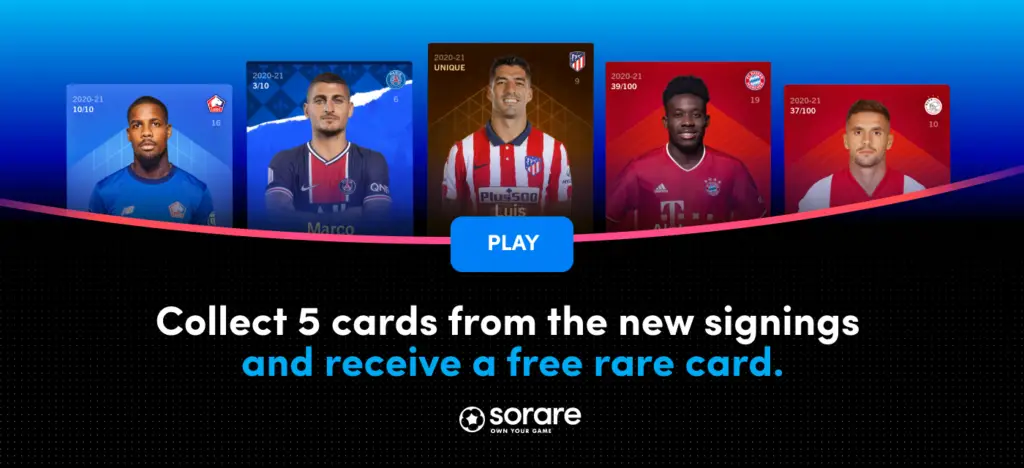Last updated on June 30th, 2022
Transfers are perhaps the most common occurrences in football. In the summer and winter transfer window of every season, many players leave their clubs for new ones.
These transfers are due to several reasons concerning both the club and the player.
Here is what you need to know about why footballers change clubs:
Why do footballers change clubs so often?
In football, the career of players rarely revolves around a single club. Although some players were able to play for just one club in their entire career, it is pretty uncommon.
The sport of football is very demanding, and players always make sure to find the most comfortable situation to perform in. However, numerous reasons can influence their decisions to leave their clubs for ‘greener pastures’.
Here are 11 possible reasons why they may do so:
#1 Ambition
This is the most common cause of transfer nowadays. Big clubs are always looking for stars who will excel at their clubs. Likewise, players who are hungry for glory aim to play for such clubs.
As such, this inspires the ever recurrent trend of clubs acquiring bright players each season. Sometimes, the player’s desire for ambition may transcend a single ‘big’ club, and he will seek to play for many teams of his choice.
Zlatan Ibrahimovic is an excellent example of an ambitious player. Regarded among the greatest strikers ever, Zlatan has performed at several levels throughout his career.
The Swede has played for nine clubs over his 23-year superb career and may even play for even longer!
These clubs include:
- Malmo
- Ajax
- Juventus
- Internazionale
- Barcelona
- AC Milan
- Paris Saint-Germain
- Manchester United
- LA Galaxy
#2 Dispute with the Manager
Managers play a huge role in the squad planning of their teams. Thus, a conflict between the manager and player will usually lead to an unfavourable fallout for the player.
Such a player will likely be sidelined and starved of playtime. Lack of playtime often prompts players to leave the club for more suitable conditions.
Ruud Van Nistelrooy is one of the best European strikers ever. The Dutchman plied his trade for European giants like Manchester United and Real Madrid where he won several accolades.
Before his 2006 move to Real Madrid, Van Nistelrooy reportedly fell out with United manager Sir Alex Ferguson. Due to these ill relations, he dropped in the manager’s pecking order and became dispensable, which led to his Madrid exit.
#3 Wage Demands
The club management is in charge of maintaining the contracts of their players. Clubs are embroiled in negotiations with the players’ representatives/agents all year round.
Such negotiations aim to settle on a better deal for both parties involved. However, if they cannot reach a satisfying agreement, the player will consider options elsewhere.
Sergio Ramos is one of the greatest defenders in football history. The Spaniard emerged from Sevilla and made his name at Real Madrid, notably captaining the Los Blancos to great success.
However, Ramos’ glorious 15-year career ended after he left the club for Paris-Saint Germain in the 2021 summer window. Sergio Ramos and the club’s management could not agree on a contract extension based on his wage demands.
#4 Personal Issues
Along with their quests for glory and greener pastures, footballers may consider their personal life too. Thus, players switch clubs due to the situations in their private lives.
Such situations could be due to family matters and personal sentiments. As such, these players move to put themselves and their families in a more comfortable position.
Radja Nainggolan is an example of a player compelled to move due to personal/family issues. The Belgian has shone for both club and country at different levels.
Over the years, Naingolan cemented his status as one of the best midfielders in Italy’s Serie A. However, his flight at the top was cut short as he had to re-sign for his former club, Cagliari, due to his wife’s battle with cancer.
Naingolan’s wife, Claudia Lai, lived in Cagliari, and he left Inter to be with her during the precarious period of her sickness.
#5 Nostalgia
Another common trend in football is the return of players to their boyhood clubs. Upon fulfilling their ambitions, footballers decide on returning to their roots.
During their careers, many players express their desire to return to where it all started. Once it is all said and done, they return to their ‘first love’ to perhaps retire there.
Andriy Shevchenko is one of the greatest strikers ever. The Ukrainian made an excellent name for himself at AC Milan, notably winning the 2004 Ballon d’Or.
Shevchenko emerged from the ranks of Dynamo Kyiv in his native Ukraine. After playing for 10 years at Europe’s top level, he moved back to Dynamo Kyiv in 2009 and finally retired from football in 2012.
#6 Health and Injuries
Due to the intensity of high-level football, players may not be able to maintain their best form. This may be due to recurrent injuries or deeper health issues.
In this case, footballers choose the best course of action to switch clubs. This transfer move will ensure the players can play their best in manageable conditions.
Cristian Eriksen became one of the best playmakers in the world during his notable stint at Tottenham. The Dane has also been one of the brightest spots in the Denmark National team.
During the Euro 2020, Eriksen collapsed from a cardiac arrest on the field during a group stage match. Later on, he was diagnosed with a heart condition and fitted with an Implantable Cardioverter Defibrillator (ICD) to alleviate his ailment.
You can find out more about how the Euros differ from the Champions League here.
Because of his condition, Inter Milan released Eriksen from his contract. However, in his resolve to continue playing the beautiful game, Eriksen returned to the Premier League with Brentford.
#7 The Coach’s Pull
Since the coach is usually very involved in the squad planning process, he has a significant say in the profile of players he wants. Coaches can decide on transfers to fit their style of football.
Moreover, a coach may have established a great relationship with a particular player. In that case, the bond may convince such a player to move to the manager’s new club.
Ricardo Carvalho spent a great deal of his career playing under the tutelage of his adored manager, Jose Mourinho. The two Portuguese legends bonded at Porto during Mourinho’s tenure, where Carvalho was an essential squad piece.
After their European triumphs at Porto, Carvalho followed Mourinho to Chelsea in 2004. After Mourinho left for Inter in 2007, the pair were separated but would later be reunited at Real Madrid in 2010.
#8 Form
The major decider of player transfers is form. The best clubs want the best players, so players in great form get transferred to their desired suitors.
On the other hand, out-of-form players also make way for new arrivals in their clubs. Many times, players such as club legends may not be able to replicate the desired level of elite form needed at their present clubs.
This will cause them to move to another club.
Raul Gonzalez is regarded as one of the greatest players in Real Madrid history. The Spanish attacker emerged through the club’s ranks as a teenager and made an immense impact on the club.
However, the Spaniard’s level later declined. It hampered his ability to provide the level of contributions needed at the club. With new arrivals at the club, Raul left the Bernabeu for Schalke 04 in 2011 and played for other clubs before retiring in 2015.
#9 League Regulations
In football, the governing bodies make several regulations to promote the quality of football in their respective countries. In addition, many leagues have several guidelines and rules that the club must follow in terms of squad planning.
Some leagues have a salary cap that the club must not flout. To avoid the breach of such rules, the club prioritises trimming its dispensable players.
Lionel Messi is one of the greatest footballers ever. The Argentine made his name with a legendary career at Barcelona since his emergence in 2006.
However, the 2021 summer transfer window saw him swap the Catalan club for Paris Saint-Germain. The shock transfer occurred because the club could not renew Messi’s expired contract in line with the league wage cap regulations.
Leagues also have a nationalities requirement. For example, La Liga has a maximum number of non-EU players allowed. Thus, clubs maintain these regulations by allowing some players to depart on loan or permanent transfer.
#10 Club Finances
Since football is also a business, clubs are open to selling their bright players for a fresh source of revenue. As a result, many clubs follow the business model of developing players for future profit.
The revenue generated from such sales will improve the club’s squad and infrastructure.
In other cases, the club may fall on hard times and need to lighten its wage bill. During such circumstances, players are allowed to leave the club for usually low prices since the goal is to reduce wages.
Dani Parejo left his decade-long club, Valencia, to regional rivals, Villareal, on a free transfer. This was due to the financial crisis at the club and its owner, Peter Lim.
The move sparked serious outrage from the fans who were dejected at the exit of their beloved captain. In his first season at Villareal, Parejo helped the club to their first-ever trophy, the 2020/21 Europa League title.
#11 Player Development
Some footballers may not play as much as they want to at football clubs. Due to this, the players seek consistent playing time elsewhere.
Such circumstances usually happen to young talents who need consistent game time to develop optimally. Therefore, their clubs may allow the players to leave on loan or permanent transfer with buyback clauses.
Martin Odegaard is an example of a player who left his club for consistent playtime. Odegaard emerged from his native country, Norway, in 2014 and signed for European giants Real Madrid in 2015.
However, he did not get enough chances at the Bernabeu. Odegaard spent most of his Los Blancos career on loan to several clubs. At the beginning of the 2020/21 season, he finally got the chance to play for Real Madrid, but injuries complicated his term.
Upon his return from injuries, Odegaard was no longer important to the manager’s plans and was loaned out to Premier League club Arsenal during the winter transfer window. The following summer, Odegaard completed a permanent transfer to the North London side.
He has been a gem for Arsenal since his move.
Conclusion
Players transfer in and out of clubs during every transfer window. A football transfer is usually not sporadic and may have deeper reasons.
However, the ultimate goal of a transfer is to find a suitable club for a player and vice versa.
You can find out more about transfers here, and check out which sources are reliable when you are looking for transfer news!
If you’re looking to buy the latest football merchandise from your favourite club, you can check out the latest deals at Kitbag.
Subscribe to Telegram and Twitter to get the latest updates!

Are you passionate about football and want to earn some side income?


